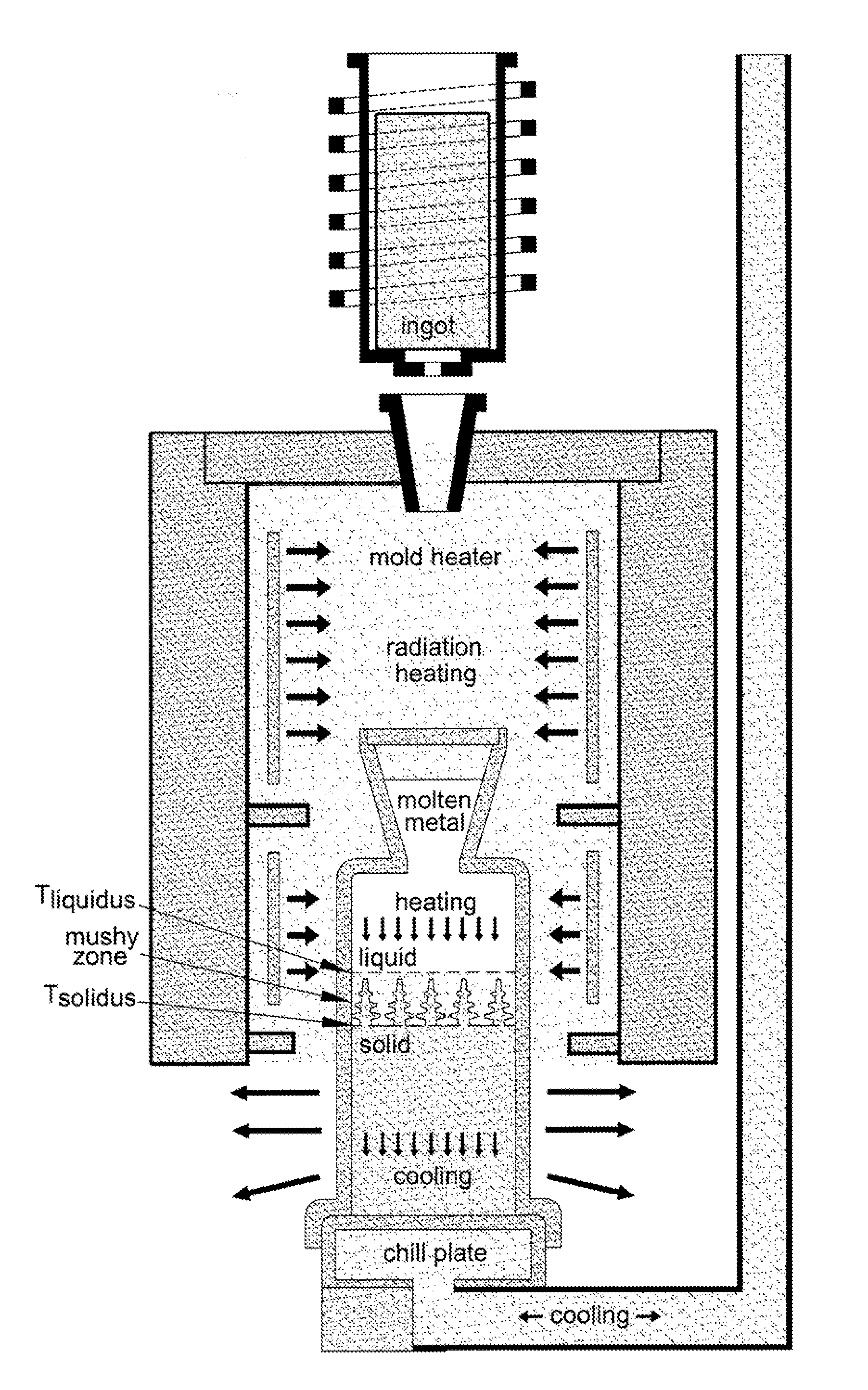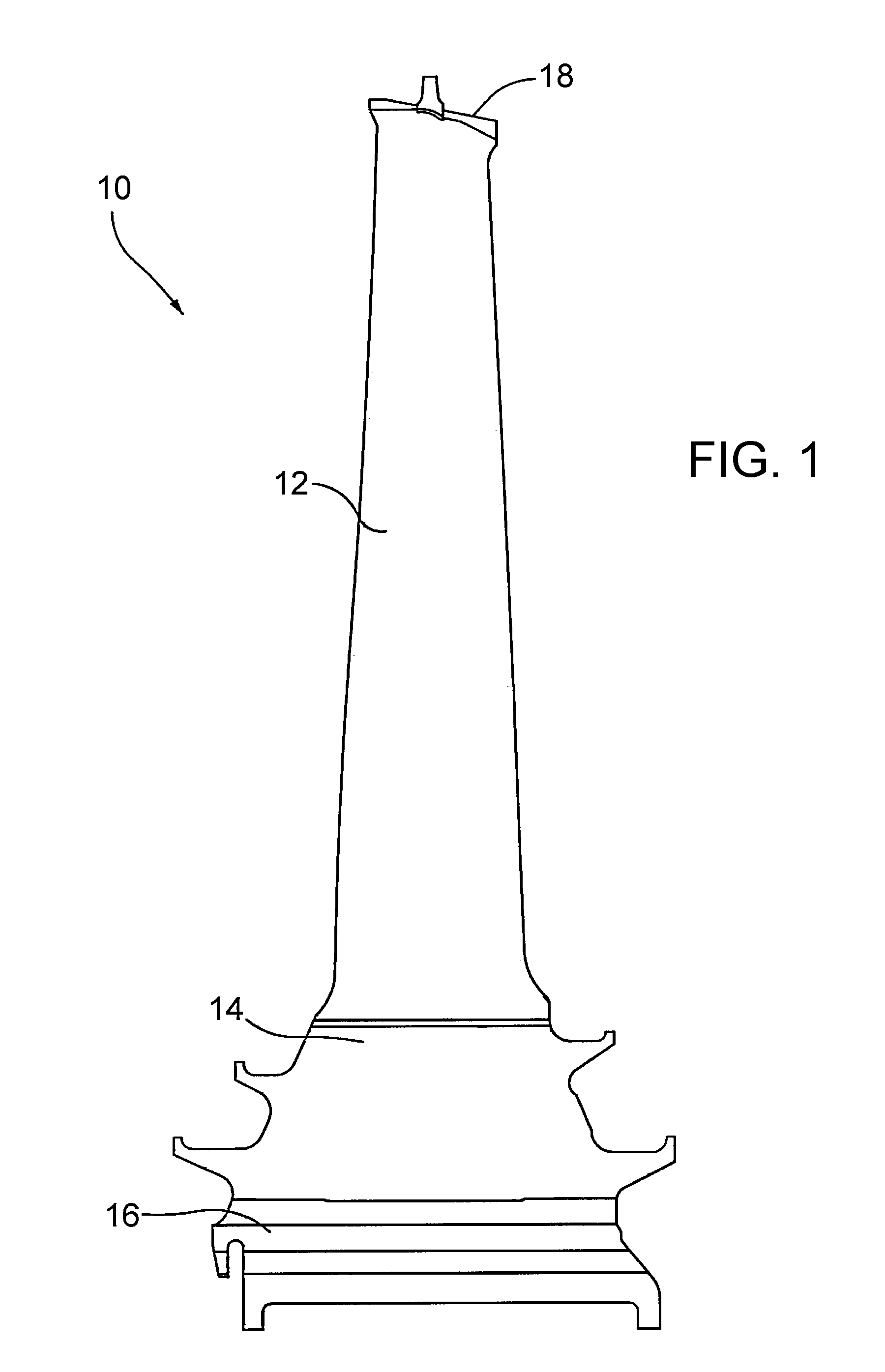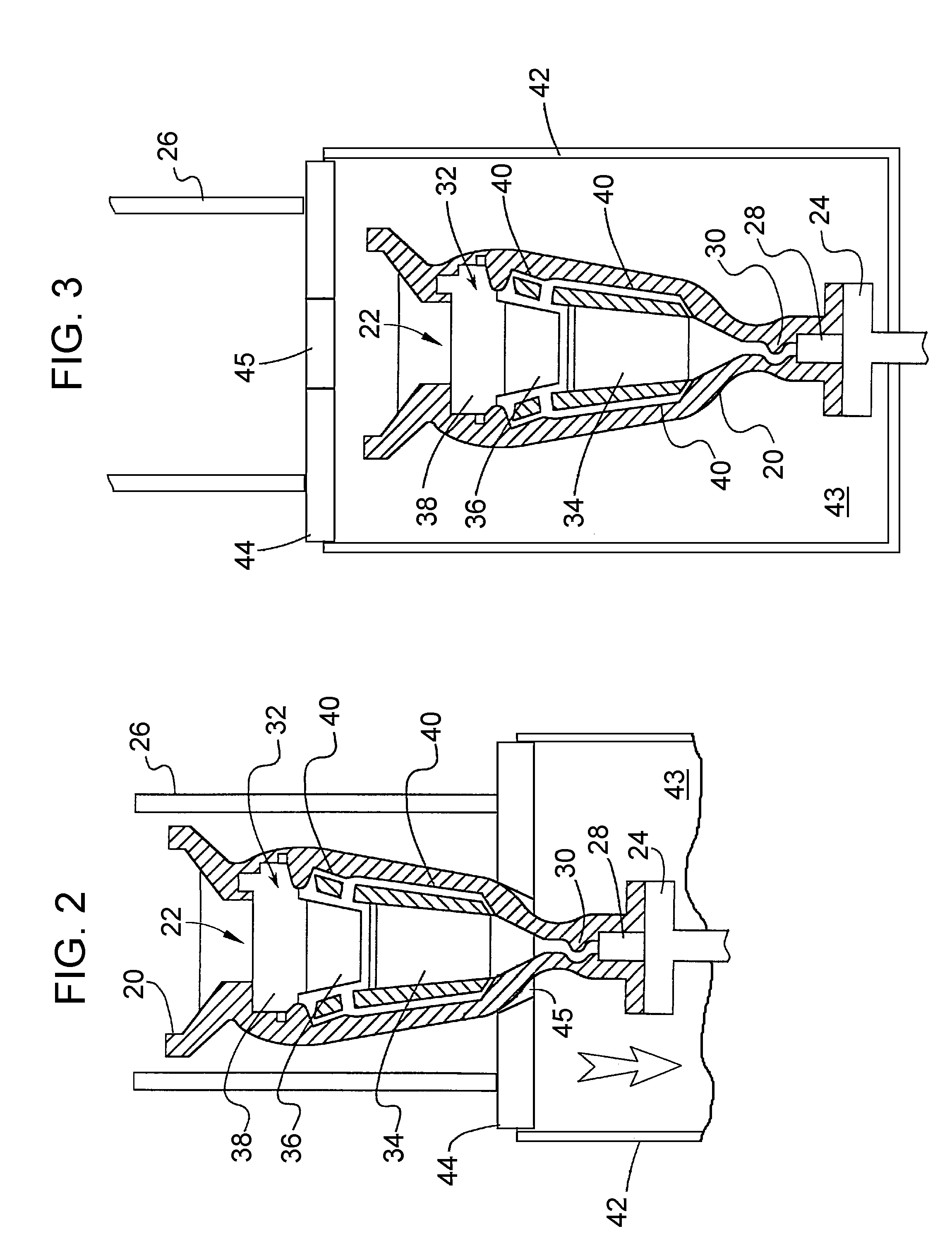Unidirectionally-solidification process and castings formed thereby
a technology of unidirectional solidification and castings, which is applied in the direction of machine/engine, crystal growth process, synthetic resin layered products, etc., can solve the problems of correspondingly large cross-sections (and weights) and inability to produce stage buckets and other castings with lengths exceeding one hundred centimeters, and achieve the effect of minimizing the transverse thermal gradien
- Summary
- Abstract
- Description
- Claims
- Application Information
AI Technical Summary
Benefits of technology
Problems solved by technology
Method used
Image
Examples
Embodiment Construction
[0020]The present invention provides for the capability of producing unidirectionally-solidified castings beyond the capabilities and expectations of prior directional casting technologies. The invention builds upon a discovery disclosed in commonly-assigned U.S. Pat. No. 6,217,286 to Huang et al. (hereinafter, Huang) that certain solidification process conditions, as evidenced by dendrite arm spacing, are capable of preventing freckles in castings of up to forty inches (about one hundred centimeters) in length. The capability provided by the present invention was unexpected from Huang, as evident from the teachings of this patent. Particularly unexpected was the ability to achieve and maintain a sufficient axial thermal gradient capable of forming primary dendrite arms with an acceptable arm spacing that would result in the prevention of freckling. Because the axial thermal gradient is dependent on the cooling rate and solidification rate (approximately equal to the withdrawal rate...
PUM
| Property | Measurement | Unit |
|---|---|---|
| mass | aaaaa | aaaaa |
| length | aaaaa | aaaaa |
| lengths | aaaaa | aaaaa |
Abstract
Description
Claims
Application Information
 Login to View More
Login to View More - R&D
- Intellectual Property
- Life Sciences
- Materials
- Tech Scout
- Unparalleled Data Quality
- Higher Quality Content
- 60% Fewer Hallucinations
Browse by: Latest US Patents, China's latest patents, Technical Efficacy Thesaurus, Application Domain, Technology Topic, Popular Technical Reports.
© 2025 PatSnap. All rights reserved.Legal|Privacy policy|Modern Slavery Act Transparency Statement|Sitemap|About US| Contact US: help@patsnap.com



